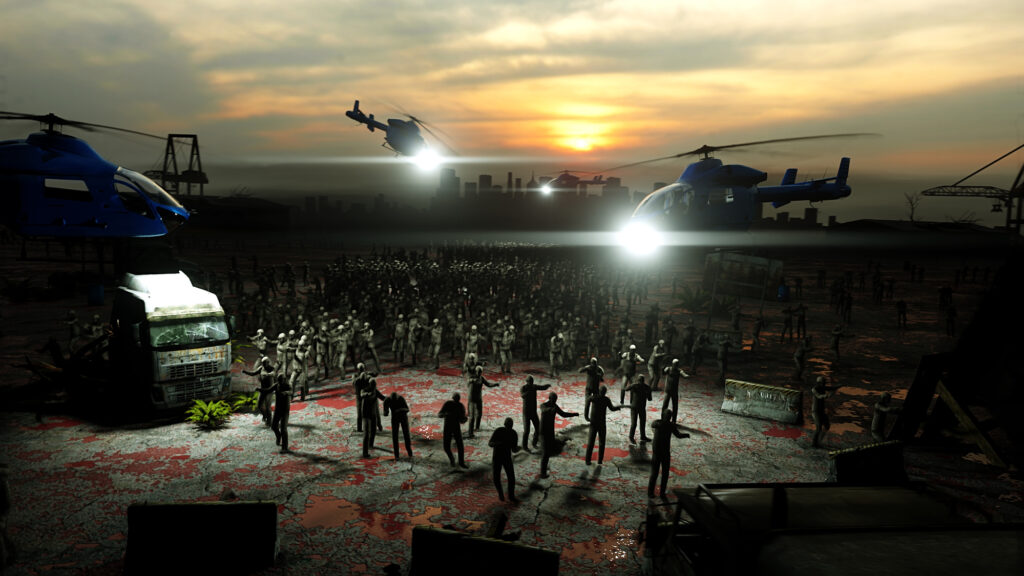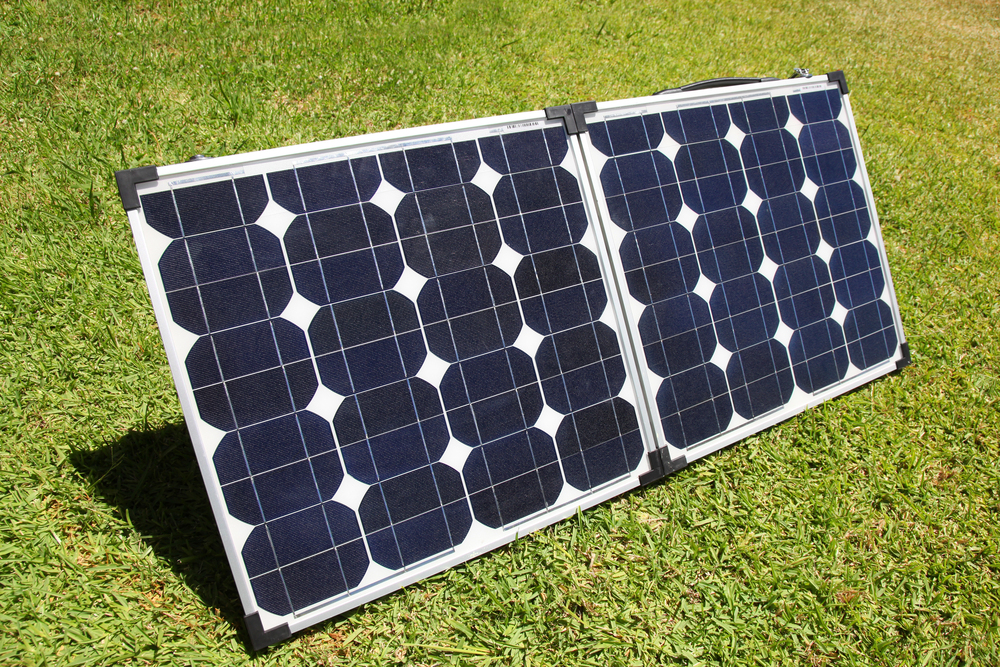When you think of ways to start teaching your children about prepping, watching post-apocalyptic movies and TV shows may not be the first thing that comes to mind.
But if you choose wisely, based on your children’s age and maturity level, they can be an entertaining way to have conversations with your children about the fact that disasters can happen.
After watching a movie or tv show, you can talk about what you as a family would do in a post-apocalypse scenario, and how you would keep safe, what types of situations you might run into in a post-apocalyptic world, and what steps your family can take now to better prepare for any kind of emergency.
There are post-apocalypse movies for all ages that you can watch with your kids, even really young kids, I swear. Let’s start with…
Post-Apocalyptic Movies And TV Shows For Young Kids
Wall-E
Ah, yes, that childhood classic about Waste Allocation Load Lifter Earth Class (Wall-E), the lonely robot on a garbage-filled earth. Poignant and adorable. What could watching this movie teach your children about a TEOTWAWKI scenario?
1.) Self-Reliance: Wall-E showcases the importance of being self-reliant. You can use this movie to point out to your children the importance of learning practical skills and being prepared to take care of themselves in challenging situations.
2.) Resource Management: Wall-E is the king of upcycling. He collects discarded items and repurposes them, making them useful. These skills would be vital if society collapses and going to stores is no longe an option.
3.) Adaptability and Persistence: Wall-E runs into challenge after challenge, but he never gives up. He adapts to his circumstances, and when he runs into an obstacle, he finds a way around it. These will also be valuable traits to have in a TEOTWAWKI situation.
The Lego Movie 2: The Second Part

It’s set in a bleak, Mad-Max style world, where the characters struggle to survive after a vicious alien attack, in the former city of Bricksburg. And it’s adorable and hilarious.
Things you can teach your children from watching this movie:
1.) Facing The Unexpected: The characters in the Lego Movie 2 face various challenges, including an invasion from space aliens. Now, for most of us, alien space invasion is NOT on the list of things we’re prepping for, but it can serve as a metaphor for unexpected disasters. An earthquake, a volcano eruption, an EMP attack, a flood, a terrorist attack…we need to be prepared because we never know what’s coming.
2.) Teamwork and Friendship: Emmett’s friends are kidnapped by Duplo aliens. Emmett, Rex and Lucy must work together to defeat the seemingly evil queen’s plans. In an SHTF scenario, we’ll need to work together for many reasons – companionship, shared knowledge and resources, and safety in numbers.
3.) Adapting To Challenges: The Lego Movie 2 characters have to move through strange new worlds and quickly adapt to different threats. Adaptability will be important in a post-apocalyptic world, because we won’t know what challenges we’ll be faced with.
4.) Resiliance and Persistance: Emmett’s friends don’t want to help him at first. Emmett never gives up, and he and his friends ultimately win despite what appears to be overwhelming odds.
Ferngully: The Last Rainforest
The fairies of the rainforest live peacefully, until humans intrude on their home and accidentally release the evil Hexxus. Total fantasy, of course, and – mild spoilers – does have a sad thing happen, but ends happily as children’s movies do.
So what could such an unrealistic movie help you teach your children about prepping?
1.) The importance of defending your home: In an SHTF scenario, there is always the risk of people coming to your house and trying to destroy your home and take what belongs to you. You can be very good people, just like the Ferngully fairies, but it doesn’t matter. You have to accept that not everyone is good like you, and you have to be ready to defend yourself if bad people come to try to take what’s yours.
2.) Adaptabilty Throughout Ferngully: The Last Rainforest, the characters must adapt to changing circumstances and work together to overcome challenges. This can teach children the importance of being prepared for unexpected changes and disruptions, whether they are environmental, social, or personal. By learning to anticipate and respond to change, children can develop resilience and problem-solving skills that are essential for prepping.
Connection to Nature: The movie celebrates the deep connection between humans and nature, emphasizing the importance of respecting and appreciating the natural world. Children can learn about the benefits of spending time outdoors, connecting with nature, and cultivating a sense of stewardship for the environment.
Community and Cooperation: Ferngully: The Last Rainforest showcases the power of community and cooperation in protecting one’s home and fighting against invaders.
Cloudy With A Chance of Meatballs
When you were thinking about post-apocalyptic movies, I bet you weren’t thinking about a movie where the biggest threat is being crushed by a giant hot dog or eaten by sentient food, were you?
But, the movie is funny, cute and non-threatening, and any movie about a disaster offers a good segueway into discussions about what might happen in a disaster.
Among the lessons that you could discuss with your children from this movie are persistence, problem-solving, and the importance of being prepared for unexpected events. Things the movie’s characters face:
1.) Economic hard times. The economy shifts and changes all of the time. You can talk about the importance of saving and stockpiling, even when times are good, because the economy is unpredictable and you can never tell when a business will close or an industry – like the island’s sardine factory – will collapse.
2.) Listening to parent’s advice: Flint’s father gives him very good advice throughout the movie, which Flint ignores. Because Flint ignores his father’s advice, bad things happen and the world is put in danger. Point out the times that Flint doesn’t listen to his father, and ask your children what Flint could have done differently.
3.) Preparing For Emergencies, Including Environmental Hazards Like Big Storms: The food machine makes the weather go crazy, and giant food is raining from the sky. The residents of Swallow Falls are forced to evacuate.
Children can learn about the importance of being prepared for emergencies by having a plan, gathering supplies, and knowing how to stay safe in different situations. This can help them feel more confident and secure in the face of unexpected events.
3.) The Power Of Teamwork: Flint works with his family and friends and neighbors to save the town, and the world, from the disaster of a food-making machine gone rogue. Children can talk about how teamwork is crucial in an emergency, and how different members of a team contribute to solving problems and getting things done.
4.) Teach Your Children Where Food Really Comes From In the movie, a machine converts water into cheeseburgers, meatballs, hot dogs, steaks, etc…talk to your children about where food really comes from. Get them involved in food preparation. Where does a hot dog come from? Where does the meat, the bun, the ketchup, and the mustard come from? Consider making some of these food items, like ketchup and bread, with your children.
The Last Kids On Earth
Available on Netflix. A cartoon series, with four middle school kids who have survived a monster apocalypse.
Takeaways:
1.) We need other people to survive and thrive! These kids have each other’s backs. They survive because they’ve got each other. They also manage to come up with ways to have fun and still enjoy life despite the circumstances.
2.) What will we have to do to survive after the end of the world happens? This movie shows the kids scavenging for supplies, listening to a scanner, and searching for a generator, among other things.
3.) Adaptability, and using what tools you can find. The kids have to make weapons from whatever they can scavenge.
4.) Knowledge is power. Quint, the group’s resident genius, often uses his scientific knowledge to solve problems and create helpful gadgets. This highlights the importance of learning and staying curious. Understanding how things work can provide practical solutions and give kids an edge in survival situations.
Post-Apocalyptic Movies And TV Shows To Watch With Older Kids
Depending on your household rules for media-watching, there are a variety of good post-apocalyptic movies that you can enjoy with your older kids and young teenagers. Some of them, like World War Z, are just fantasy, but others, like various ecological disaster movies, could certainly happen and a big enough disaster could cause chaos for a wide geographical area, for a long long time.
All of these movies are going to have violence, death and scary scenes because they’re post-apocolypse or disaster movies. I have done my very best to make sure I didn’t recommend any movie with nudity or inappropriate sex scenes. I linked each title to a parents guide, so you can get an idea of what you’re in for.
1.) World War Z

A great movie about a family caught up in the terrible spread of the Z virus. It doesn’t have any sexual situations but there is, of course, a lot of scary stuff and violence. A former “U.N. Investigator”, whatever that is, is sucked into the fight to save the world when a virus quickly turns people into rage-zombies.
This movie highlights:
1.) Family ties. What might happen in a SHTF scenario? The father has to separate from his wife and kids to go investigate the virus. Also, found family – the family adopts a little boy after his parents are killed by zombies. What would your kids do if they were separated from you? What plan have you worked out so that you could safely reunite?
2.) Preparedness: There’s a frenetic scene at a store as looters swarm in. This is a teachable moment to talk about stocking up on supplies before disaster strikes. You can discuss the various mistakes the hero and his wife made with their lack of preparation. The hero and his family were not well-prepared at all for any kind of disaster. Their daughter has asthma and they don’t have back-up inhalers or a go-bag or bug-out bag with them when they drive into the city. They’re not prepared for an emergency to happen while they’re away from home. Because of that, they’re forced to go to a store that’s being mobbed by desperate people.
3.) Sticking together: In the store, the husband and wife split up so they can go buy different things. A couple of thugs attack the wife and try to drag her away, and nearly succeed. The husband spots the younger daughter in a runaway grocery cart, screaming in terror – because he didn’t stay with his wife and daughter to protect them. He does manage to rescue them, but he’d taken an unnecessary risk. Splitting up in an emergency is a very dangerous idea. If they had been separated, how would they have gotten ahold of each other again, with cell phone service sure to go down and the world collapsing all around them?
A Quiet Place
A movie about a family in a world where making a sound can get you killed. Hideous aliens have taken over the planet and they attack any human who makes a sound. Again, completely unrealistic – I hope! – but it raises fascinating issues to consider and to discuss with your children. This is not a movie I’d watch with younger kids, because it has a couple of tragedies and a lot of death and violence.
Topics you could discuss with your older kids: In the movie, the sister makes a mistake that ends up getting her little brother killed. The importance of understanding the rules, understanding the purpose of the rules, and following the rules, should be emphasized. The apocalypse is not the time to decide it would be fun to sneak off and explore somewhere, for example.
The girl in the movie is deaf. An important part of prepping is always having back-up supplies. It would have been smart for the parents in this movie to have at least an additional hearing aid and a lot of batteries, in case of any kind of disaster. Nobody could anticipate an alien invasion, but what about having to evacuate, fast, in the event of a forest fire? Explain to your children the concept of “two is one, and one is none” – emergency items can fail. Always have backups of medication, medical equipment, and other vital supplies.
The Day After Tomorrow
In a climate change disaster movie, a father must make his way across the country to reach his son. This movie highlights issues like facing the unexpected, survival in extreme weather, and making family plans.
How would, and should, your children get ahold of you in a grid-down emergency situation? If there is no way for them to get ahold of you, what is the plan? Where is the place that they should go to wait for you?
What are some ways to stay warm in extreme weather? Hand-warmers, waterproof matches, the knowledge and ability to start a fire (safely, so it doesn’t spread), appropriate extreme-weather clothing, are all good options to discuss.
Take the opposite situation – what to do in hot weather? Knowledge of how to find and purify water will be vital to survival.
Contagion
Made in 2011, 8 years before Covid. Pandemics happen periodically. The movie follows the lives of different people impacted by a global pandemic, including a father with his teenaged daughter. We get some very realistic storylines about things that would happen – the father sees people breaking into his neighbors house and tries to call 911. He quickly finds out, help is not coming. He breaks into an empty house and steals their weapons. Disinformation is everywhere, and nobody knows what to believe.
Takeaways: With every disaster movie, talk about how you and your family would stay safe in that specific situation. What are some things you could do to prep for a global pandemic? Stockpiling supplies, learning how to protect your home in case people tried to break in, et cetera. Ask your kids what they would do in a scenario like this.
11 More Post-Apocalyptic Movies You Can Watch With Older Kids
Do your research and make sure that there’s nothing that you personally would find inappropriate to watch with your kids.
I tend to skew to the conservative side in life and in my movie/tv choices, but that doesn’t guarantee that everything on the list will work for you. There might be swearing, there will definitely be violence and death. I have done my very best to avoid any movies with nudity or sexual situations; please let me know if I’ve missed something. There’s a ‘contact us’ form on this site.
I’ve linked to the IMDB parent guide for each movie so you can get an idea of some of the things you might come across:
- Love And Monsters
- Warm Bodies
- I Am Legend
- Zombieland – LOTS OF SWEARING
- Anna vs. The Apocalypse A Zombie musical? Why not?
- The Hunger Games
- Terminator 2 The first Terminator had a couple of s-e-x scenes so I wouldn’t watch that one with my teenagers.
- The Maze Runners
- Red Dawn
- Solarbabies
- Left Behind






